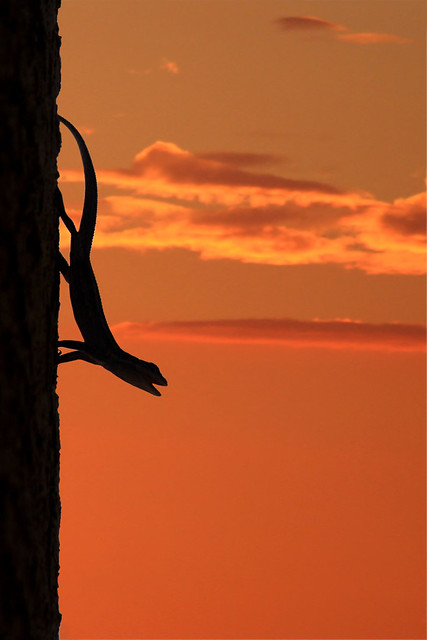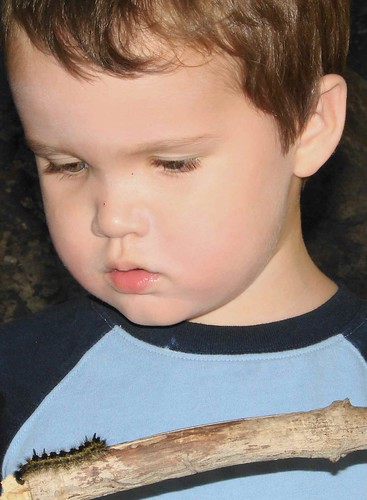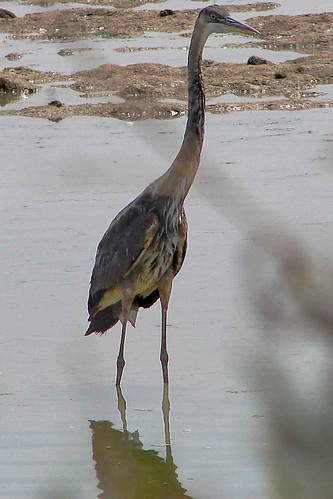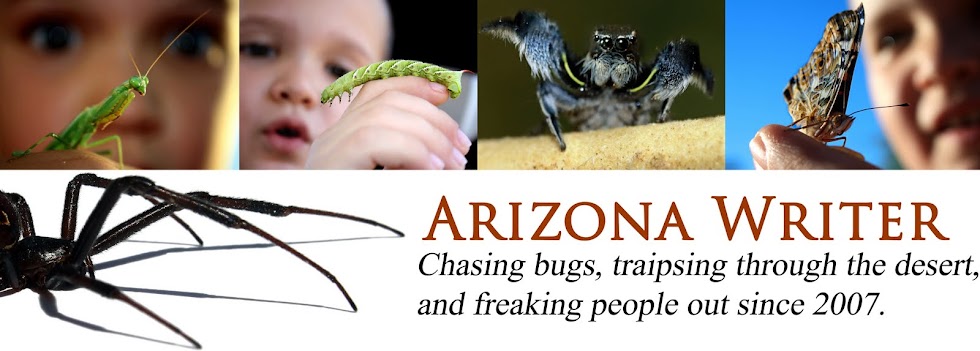Another thing I realized is that when my camera is my most prominent companion (as opposed to a more loquacious, hyperactive 9-year-old companion), people make certain assumptions. If the camera's aimed at a certain subject -- birds, say -- they assume you're an expert on that subject. Thankfully, I'm able to hold my own when a group of excited birders accosts me to ask OMG was that a green-winged teal just now, and how many wigeons are in this pond?
But mostly, they assume I know all about photography. They ask questions: "How do you freeze the water?" "How do you capture the bird in flight without blurring it?" "Why do my pictures all look so much more boring than yours? Here. Look at my first 300 instead of taking your own shots and tell me what I'm doing wrong." And so on.
I was even asked recently if I'd like to teach a photography workshop. I joked on Facebook that I'd call it "Nature Photography: How to do something a million bazillion times and gradually suck less and less."
I'm no expert. I'm average, when it comes to the mechanics of camera operation. I've never taken a class or even a workshop. I'm self-taught, and I'm not always the best teacher, on account of getting mad at my student and wanting to kick her ass. What I am good at, sometimes, is capturing animals doing stuff, and I think that's what a lot of you mean. I'm not goint to talk technical. That's been done before, and much better and by much more knowledgeable people. I'll only speak to what I know, which is getting close to animals, and capturing them using less-than-top-of-the-line equipment. So here are my few humble tips/opinions about how to fool everyone into thinking you're a kick-ass nature photographer.
It's (mostly) up to you, not the camera
First, know this: It's not the equipment. At least, it's mostly not the equipment. Good equipment gives you the options you need to capture some really great stuff, but you have to know how to do it. An inexpensive DSLR (I'd go with Canon or Nikon), especially if you're first starting, is more than enough. (You'll never get award-winning shots on your phone, so if it's really important, at least make a small investment.)
The biggest thing is to make your equipment work for you. Learn how to use it. Learn how to frame shots. (Don't center subjects, use leading lines, use the Rule of Thirds ... you can find this all online. I still mess up compositions by not leaving enough room.) Take advantage of the trial-and-error digital photography allows. The shot below, for example, was taken with a DSC-H2 (an old optical zoom camera from Sony, sort of a super point-and-shoot). The H2 is a training-wheels camera. It had many limitations that my current camera doesn't have. But clearly, it could take a good shot.

When I got my first DSLR, I brought this camera along anyway because I hadn't yet learned my way around the new one, and without experience, any camera takes boring shots. (Like I said, look somewhere like here, for starters, to find plenty of photography tips.)
Be opportunistic
If
 I find a spider, I scoop it up. (I'm housing two right now, and also a cockroach and a few lady beetles.) If it's twilight, the crickets are coming out and the crane flies are mating, so that means fun insect photos. If I'm doing something else and I see a mantis or a lizard, the something else gets forgotten. Think visually. I glanced out the window while cleaning the living room and saw the image at right. I took it, then went back to vacuuming. It doesn't have to be exotic. Work with what you have, in terms of subjects as well as equipment. You probably have more than you realize.
I find a spider, I scoop it up. (I'm housing two right now, and also a cockroach and a few lady beetles.) If it's twilight, the crickets are coming out and the crane flies are mating, so that means fun insect photos. If I'm doing something else and I see a mantis or a lizard, the something else gets forgotten. Think visually. I glanced out the window while cleaning the living room and saw the image at right. I took it, then went back to vacuuming. It doesn't have to be exotic. Work with what you have, in terms of subjects as well as equipment. You probably have more than you realize.Shoot the light
The most technical I'm going to get, and it's not really technical at all, is to say be aware of the light, and shoot at the beginning and end of the day. Do you want the rich, golden light that makes everything look prettier? Aim to shoot at sunrise, to an hour or so afterward; or start an hour or two before sunset and shoot until sunset. That side lighting is almost universally more flattering.
For some things, this doesn't really matter. Most macro photography and certain bird-in-flight shots look fine during ugly midday light, for example. If you're shooting all day, take a break or do these shots then. Otherwise, you will be disappointed.
Which looks better? This:

Or this:

It's a different subject, but it's mostly the lighting. It makes all the difference. (Caveat: Clearly, mom pride allows me to keep the crappy picture too.)
Wait. And then wait. And wait some more.
Seriously. When anyone at all asks me for quick tips, I tell them three things. The first is shoot the light. This is the second. Why?
For every time a bird does this:

...it has most likely spent an hour doing this first:

Get to know the animals. Canada geese honk before they pass overhead. Egrets and herons extend their necks and cock their heads before striking the water for a fish. Dragonflies and hummingbirds like to return again and again to the same perches. You probably won't catch it the first time, so learn. And then wait for it to happen again.
Professional nature photographers set up blinds and spend hours, weeks, MONTHS sitting in them waiting for the perfect moment. We're not magical or lucky. We're just patient and abnormally fixated on our subject (and sometimes lucky). If you don't have months (or even an hour), spend a consecutive ten minutes watching your subject. Any animal doing something is likely to be more interesting than that same animal just standing there. There are exceptions -- there are phenomenal straightforward animal portraits out there, and it's rather difficult to catch "character" in a lot of insects -- but even in these cases, it's all about capturing the right moment. Wait until the portrait subject turns its head for a great eye catch light. Wait until the insect lifts one leg, or turns to the perfect angle. Be ready, and when it's time to jump on it:
Take lots and lots and lots of shots
My last main tip. Complicated, right? My photography friends (Hi there!) definitely all know this, but I've been surprised to discover that the majority of digital camera owners don't take advantage of one of the coolest things about digital photography. A lady the other day asked me how many shots I display from the ones I take, and while shooting my 200-somethingth shot, I estimated maybe five percent or fewer. She was shocked.
If you have a few memory cards, you can pretty much take an infinite number of shots. Is the heron about to plunge? Wait until the split second before and press the shutter release for a quick burst of several shots. One will catch the splash. Is it now about to gulp down the fish? Same thing.
But the rule is about more than my love for continuous-shooting mode. Be purposeful, but liberal. Shoot often and readily, but don't be afraid to envision and take intentional shots. (They won't always work out.) Don't be afraid to shoot everything, and to look stupid doing it. I lie on the ground, sit in mud, take pictures in my driveway (my neighbors are quite sure I'm nuts), scoop up roaches and spiders, and stand on a ladder in my backyard for an hour straight, causing said neighbors to walk by repeatedly to get a look at the weirdo with her head poking up over the wall.
I'm completely serious. I take thousands of shots. Sometimes thousands a month. Which I guess should lead to my last tip:
Quit showing your crappy stuff
This isn't so much a how-to-take-pictures tip as a what-to-do-with-them tip, and obviously it's subjective. If you just want to store all your photos, or if you want to document a party, then sure, dump them all in. But if you want everyone to think your insect shot is really cool, go back to the shots you took (What did I say about taking a bunch of them?), and delete at least a third of them. Then go back through and delete half again. Then examine the remaining ones, find your favorite one to half-dozen, and go with those.
About three quarters of the time, I only keep shots that are as close to perfect as I think I can get with that particular subject. The rest of the time, the shot is really darn good, or I just really like it, but even then, I've been known to get one all ready for sharing and decide it's just not up to snuff. THAT'S really why you all think I only take good shots. I only show good shots. Usually.
And even when you think you've done everything right, even when you have, you still don't get the shot at least half the time.
For real. If it makes you feel better, this is what my usual hummingbird shots look like:

And most of my dragonfly-perching-on-a-twig shots:

And here are a few bird-in-flight masterpieces:




You keep learning. What's "good" constantly improves. This is really pretty embarrassing, but here's what I thought constituted a "good heron shot" a few years ago:

But at the time, it made me happy and proud. And that's the biggest rule. Be brutal on yourself. Know when your shots suck, and when they're good, and start to notice what makes them each way. Have enough humility to learn from others and have a sense of humor even when (especially when) you miss the shot for the fiftieth time in a row. But if it's a rare animal, your first time capturing an animal, has a great story, or just makes you happy, keep the photo. That's what it should be about.
Agh, no. It's too painful. I can't end with that horrible shot. Have a prettier heron.

So what did I leave out? Photog friends, what are your tips? And non-photographers, what else do you want to know? If I don't know it, I usually know who to pester. Happy shooting! (With cameras, of course.)









































